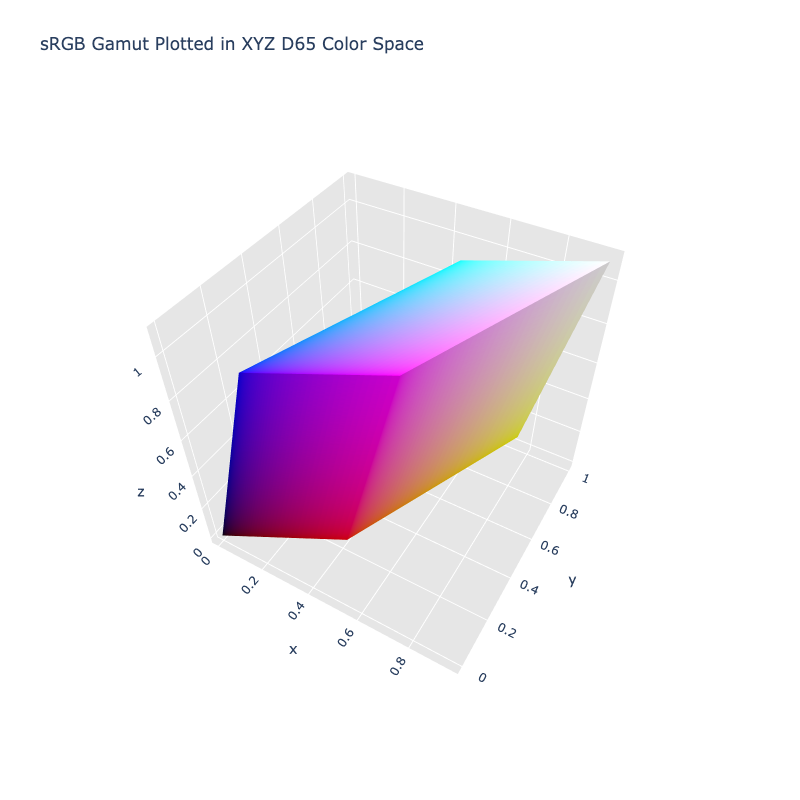XYZ D65
The XYZ D65 color space is registered in Color by default
Properties
Name: xyz-d65
White Point: D65 / 2˚
Coordinates:
| Name | Range* |
|---|---|
x | [0, 1] |
y | [0, 1] |
z | [0, 1] |
* Space is not bound to the range and is only used as a reference to define percentage inputs/outputs.

Figure 1. The sRGB gamut represented within the XYZ D65 color space.
The CIE 1931 RGB color space and CIE 1931 XYZ color space were created by the International Commission on Illumination (CIE) in 1931. They resulted from a series of experiments done in the late 1920s by William David Wright using ten observers and John Guild using seven observers. The experimental results were combined into the specification of the CIE RGB color space, from which the CIE XYZ color space was derived. The CIE 1931 color spaces are the first defined quantitative links between distributions of wavelengths in the electromagnetic visible spectrum, and physiologically perceived colors in human color vision.
Channel Aliases
| Channels | Aliases |
|---|---|
x | |
y | |
z |
Input/Output
Parsed input and string output formats use the color() format with either xyz-d65 or xyz as the identifier with the latter being an alias of the former.
color(xyz x y z / a) // Color function
color(xyz-d65 x y z / a) // Color function alternate name
When manually creating a color via raw data or specifying a color space as a parameter in a function, the color space name is always used:
Color("xyz-d65", [0, 0, 0], 1)
The string representation of the color object and the default string output will be in the color(xyz-d65 x y z / a) form.
>>> Color("xyz-d65", [0.41239, 0.21264, 0.01933])
color(xyz-d65 0.41239 0.21264 0.01933 / 1)
>>> Color("xyz-d65", [0.54694, 0.48173, 0.06418]).to_string()
'color(xyz-d65 0.54694 0.48173 0.06418)'
Registering
from coloraide import Color as Base
from coloraide.spaces.xyz_d65 import XYZD65
class Color(Base): ...
Color.register(XYZD65())